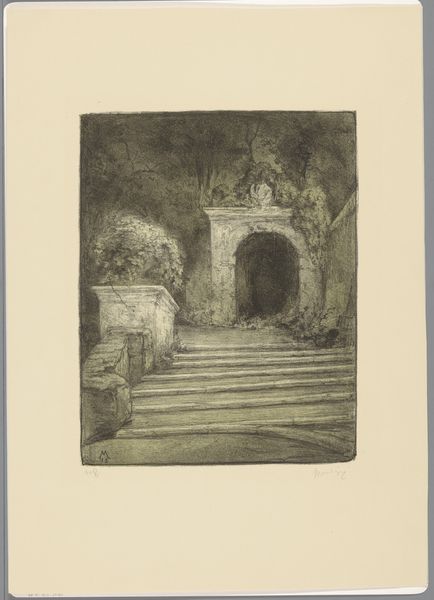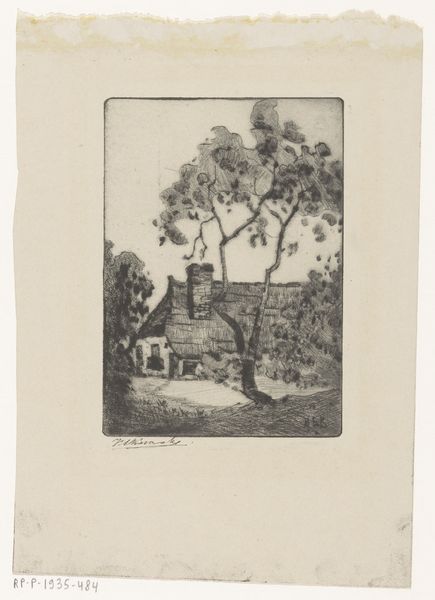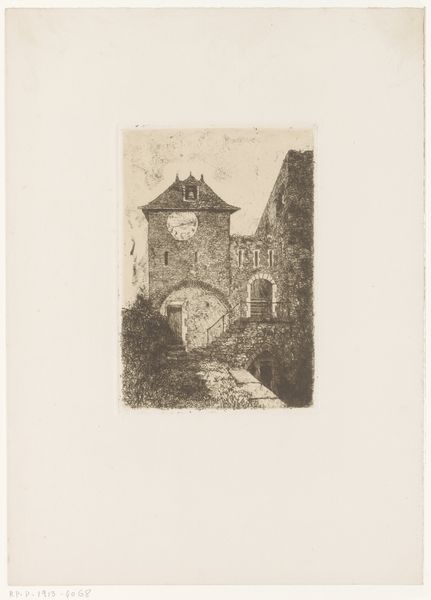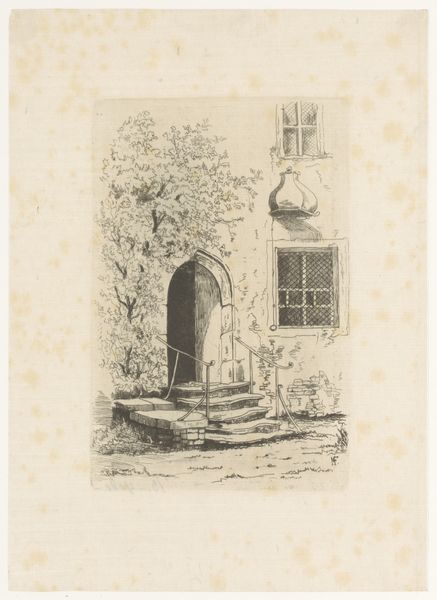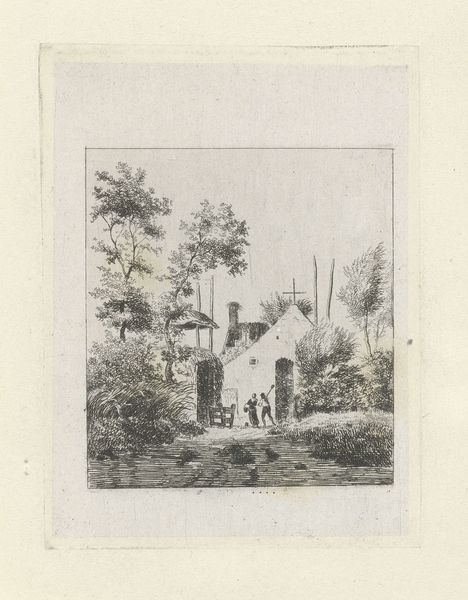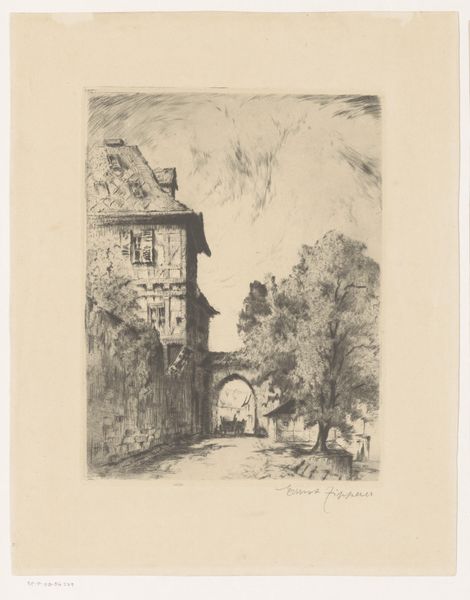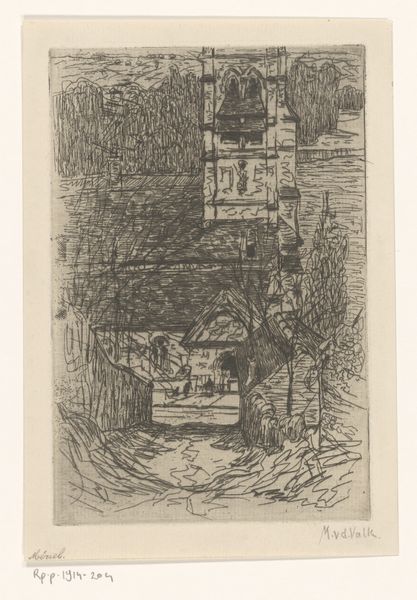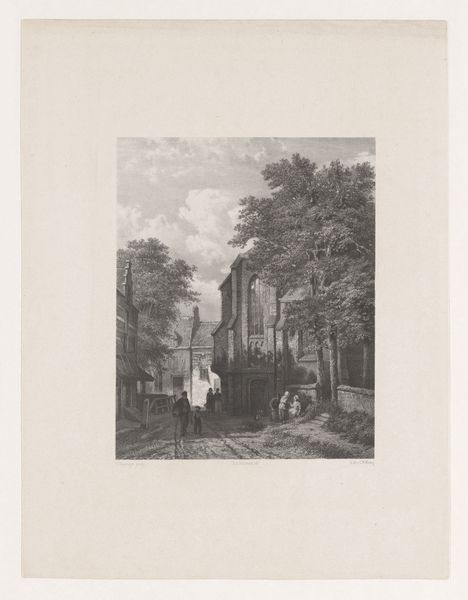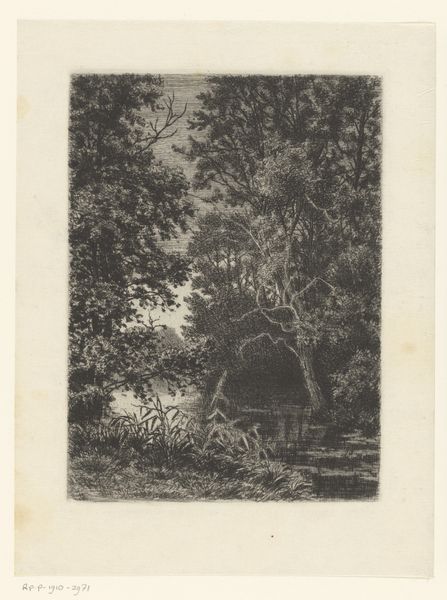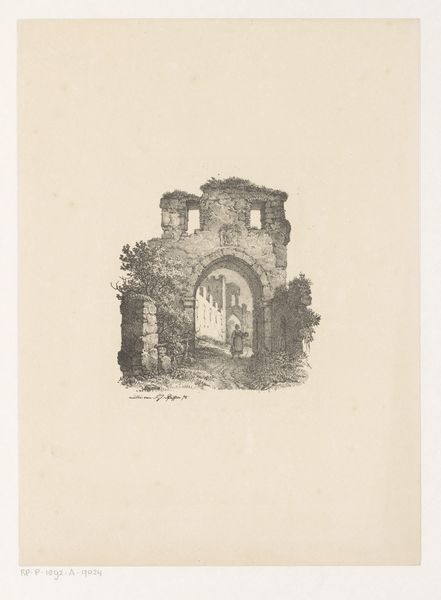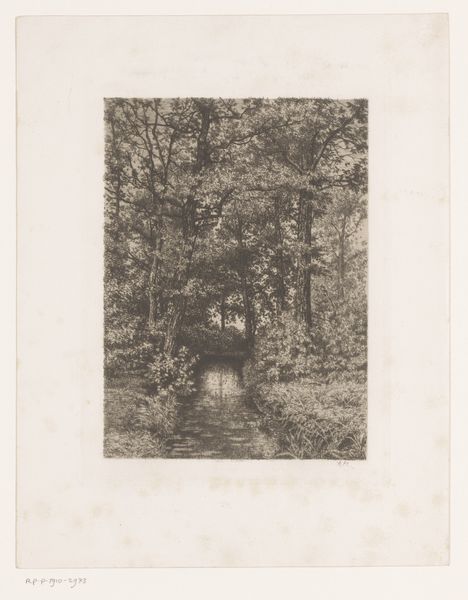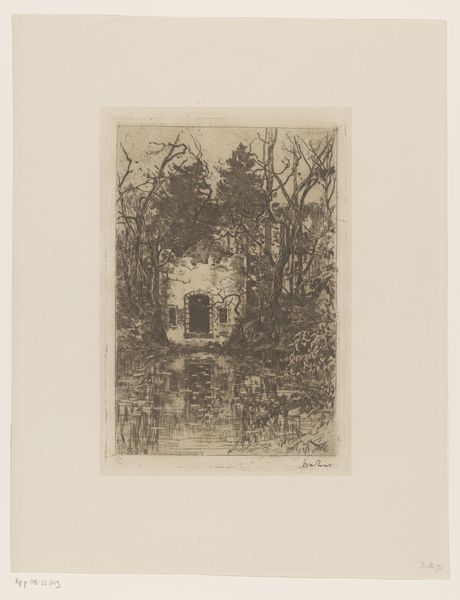
drawing, print, etching
#
drawing
# print
#
etching
#
landscape
#
realism
Dimensions: height 201 mm, width 147 mm
Copyright: Rijks Museum: Open Domain
Editor: So, this is "Poort naast een huis," or "Gate Next to a House," an etching and print made in 1884 by Maria van Hohenzollern-Sigmaringen. It depicts a stone archway, a woman walking through it, and a house attached. It's very detailed. How do you interpret this work? Curator: I see this piece as more than just a simple landscape. It speaks to the intersection of public and private spaces, a very timely topic, actually. How might the architectural structures, the gate and the house, define and control movement and access within society? Consider, who is granted entry, and who is excluded? What’s behind that gate? Editor: That’s interesting. I hadn’t thought of it in terms of access. Curator: And think about the artist, Maria van Hohenzollern-Sigmaringen. She was a Countess. How does her privileged position inform her perspective on this everyday scene? Does it romanticize the working class passing through the gate or does it make us more aware of how access might have been denied at the time based on your standing in society? Editor: That brings another dimension to it, for sure. It’s like, who has the right to depict this scene and what is their motivation? Curator: Exactly! The etching captures a fleeting moment, but it also hints at broader social dynamics. Does this woman represent the working class on the margins and can we analyze the power structures embedded within the landscape itself? Does art by privileged women depict that social stratification or undermine it? Editor: I see that her choices as the artist are critical to interpreting the work’s statement. It's amazing how much context changes my initial understanding. Curator: Precisely. And it invites us to consider whose stories are being told, and from what perspective.
Comments
No comments
Be the first to comment and join the conversation on the ultimate creative platform.

